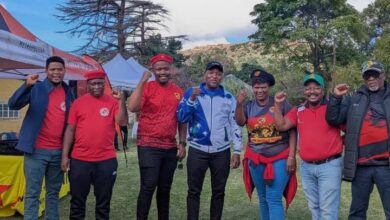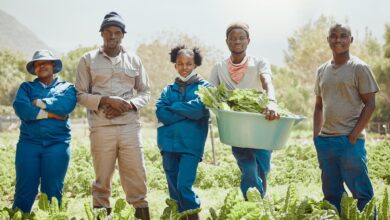OPEC Fund approves $352mln for projects in Africa, other regions

Several projects in African countries are expected to get multimillion-dollar financing from the OPEC Fund for International Development (OPEC Fund), which seeks to stimulate economic growth and social progress in low- and middle-income nations around the world.
In a meeting on Wednesday, the OPEC Fund approved $352 million to support various projects, including credit to small and medium-sized enterprises (SMEs), roads, electricity networks, water supply systems, healthcare centres, schools and warehouses.
The projects, which seek to improve the living conditions of local population, boost household incomes and ensure food security, will benefit mainly African countries, including Côte d’Ivoire, Ghana, Kenya, Lesotho, Malawi and Rwanda.
Part of the funds will also go to countries in the Americas, Central Asia and Southeastern Europe, including Turkmenistan, Nicaragua, Dominican Republic and Bosnia and Herzegovina.
In a statement, OPEC Fund said, the newly approved $352 financing will support the following public sector projects:
Côte d’Ivoire: $60 million loan for the Northern Agro-Industrial Pole Project (2 PAI-Nord), which includes the construction and rehabilitation of rural roads, healthcare centers and schools, warehouses, and collection centres, as well as infrastructure relating to fisheries and livestock production. It will boost food security and household incomes for some 400,000 people and promote the export of cash crops.
Ghana: $20 million loan for the Integrated Rural Development Project (Phase 2), which will expand the socio-economic infrastructure and improve livelihoods for some 120,000 individuals across high-poverty districts. The funds will be used for building and equipping classrooms, teachers’ quarters, health clinics, market infrastructure and drainage works, as well as providing credit to some SMEs.
Kenya: $40 million loan for the Development of Urban Roads in Five Counties – Phase 1 project, which is expected to facilitate trade, improve access to social services and marketplaces and enhance employment opportunities.
Lesotho: $19 million loan for the Regeneration of Landscapes and Livelihood (ROLL) Project, which will improve livelihoods, promote resource-use practices, and reduce environmental degradation in more than 2,200 villages populated by some 630,000 people.
Malawi: US$15 million loan for the Dowa Town Water Supply and Sanitation Project that will include the construction of a water treatment plant, a pumping station and a 51 kilometre-long distribution pipeline, as well as the installation of new communal water points and the rehabilitation of existing ones.
Nicaragua: $23 million loan for the Empalme La Tronquera – Pueblo Nuevo Rural Road Project, which includes the upgrading of a 22-kilometre road to facilitate the transport of crops to marketplaces and enhance connectivity to social services and employment opportunities.
Rwanda: $18 million loan for the Nyacyonga-Mukoto Road Project, which seeks to upgrade a 36-kilometre stretch to improve connections for 2.8 million people engaged in economic activities that include agriculture, mining and tourism.
Turkmenistan: $45 million loan for the Marine Merchant Fleet Project. It will include the construction of three new vessels for rail, passenger and dry cargo. Once operational the new ships will increase the utilization of the Turkmenbashi seaport on the Caspian Sea, part of the Europe-Caucasus-Asia transport corridor and one of the largest ports in the country.
Bosnia and Herzegovina: €25 million (US$27.15 million) loan for the Corridor Vc Motorway, Section Nemila-Donja Gracanica (Zenica North), which will improve travel connections for some 150,000 people in the city of Zenica, the country’s most important center for mining and steel production.
Dominican Republic: $60 million loan for the Program to Expand Electricity Networks and Reduce Technical Losses in Distribution Systems. Civil works will include the construction of new substations and distribution networks and the rehabilitation of existing ones in provinces situated in the north and east of the country.
Join 'Lesotho News' WhatsApp Channel
Get breaking Lesotho news — delivered directly to your WhatsApp.
CLICK HERE TO JOIN



